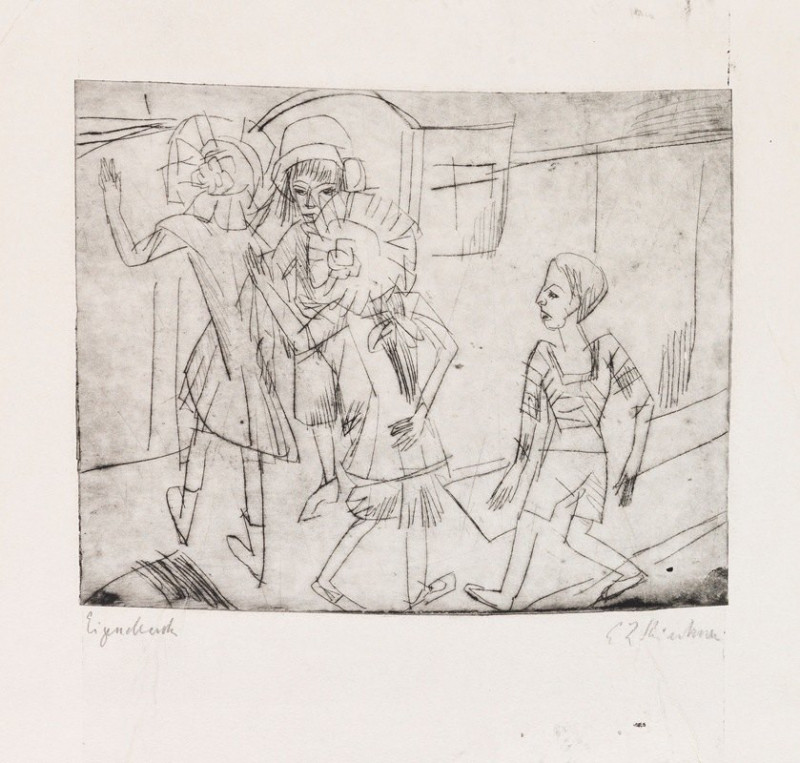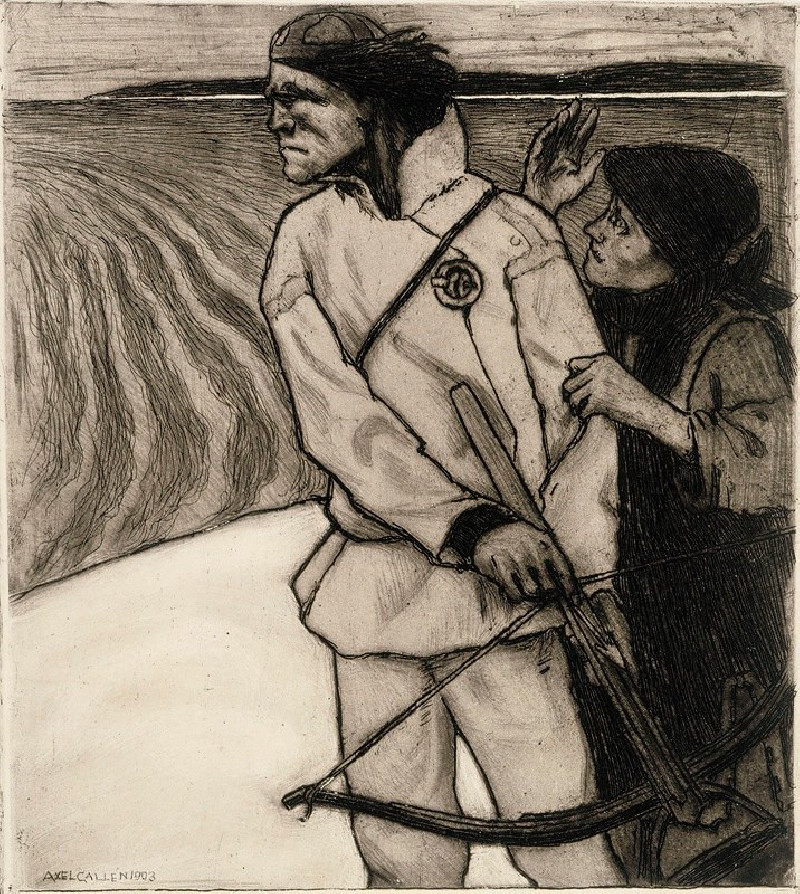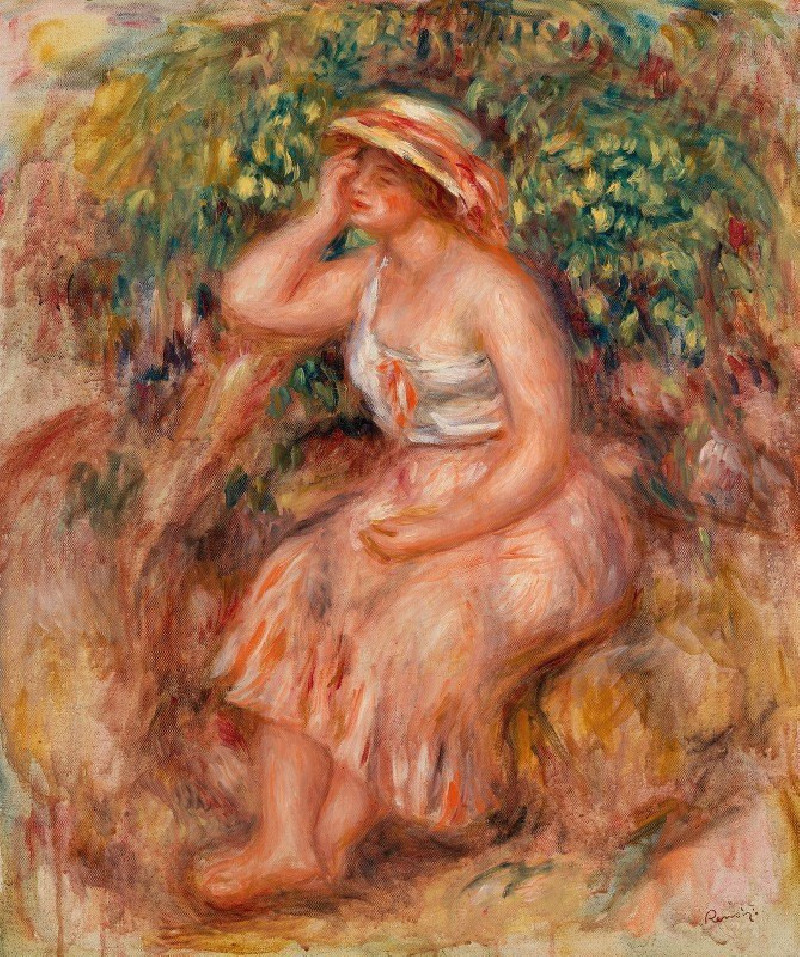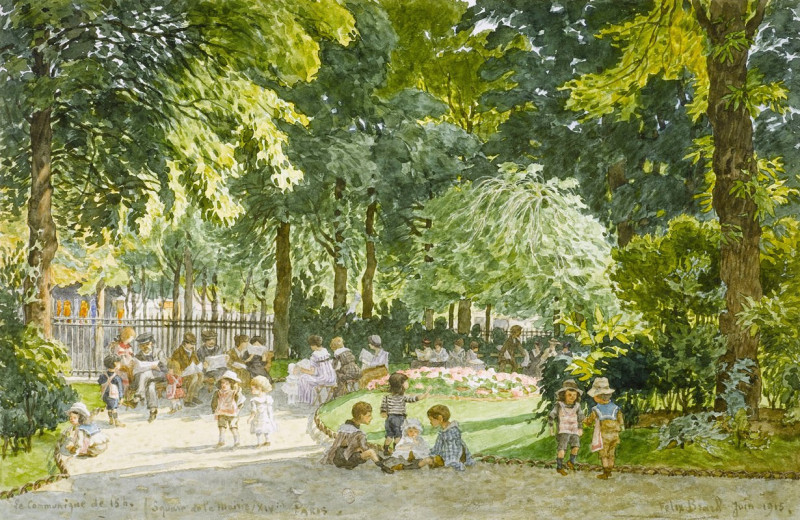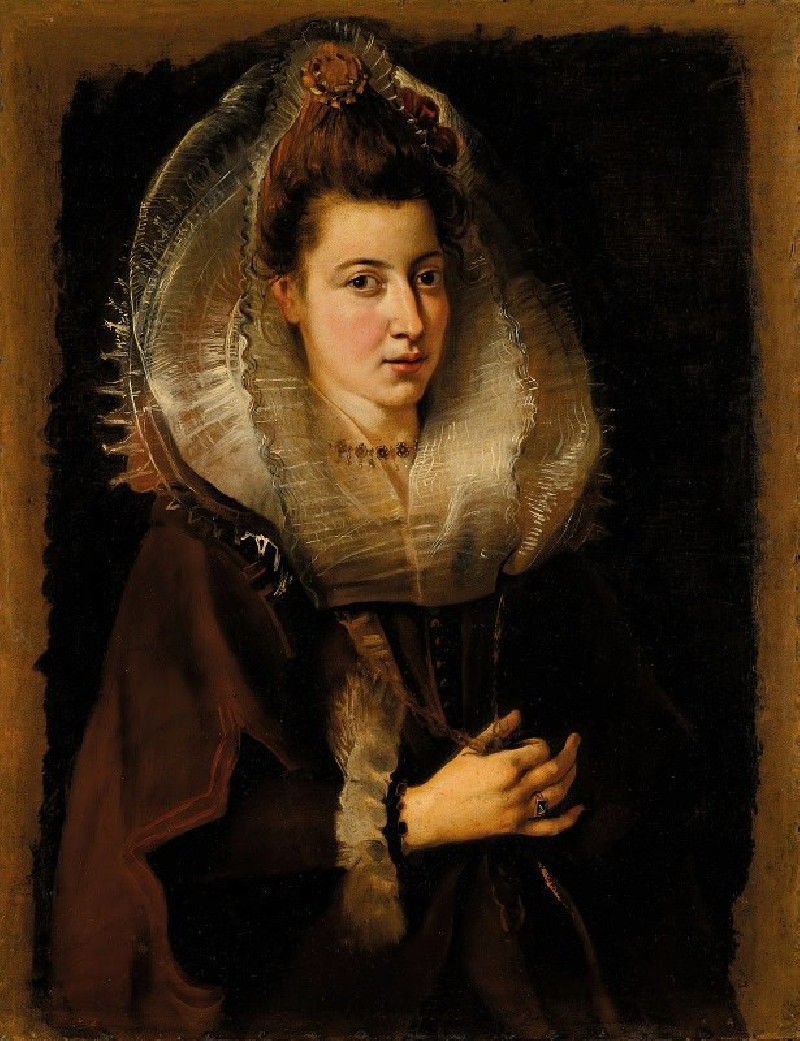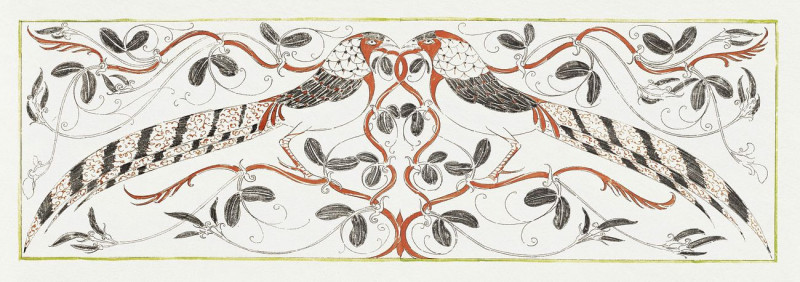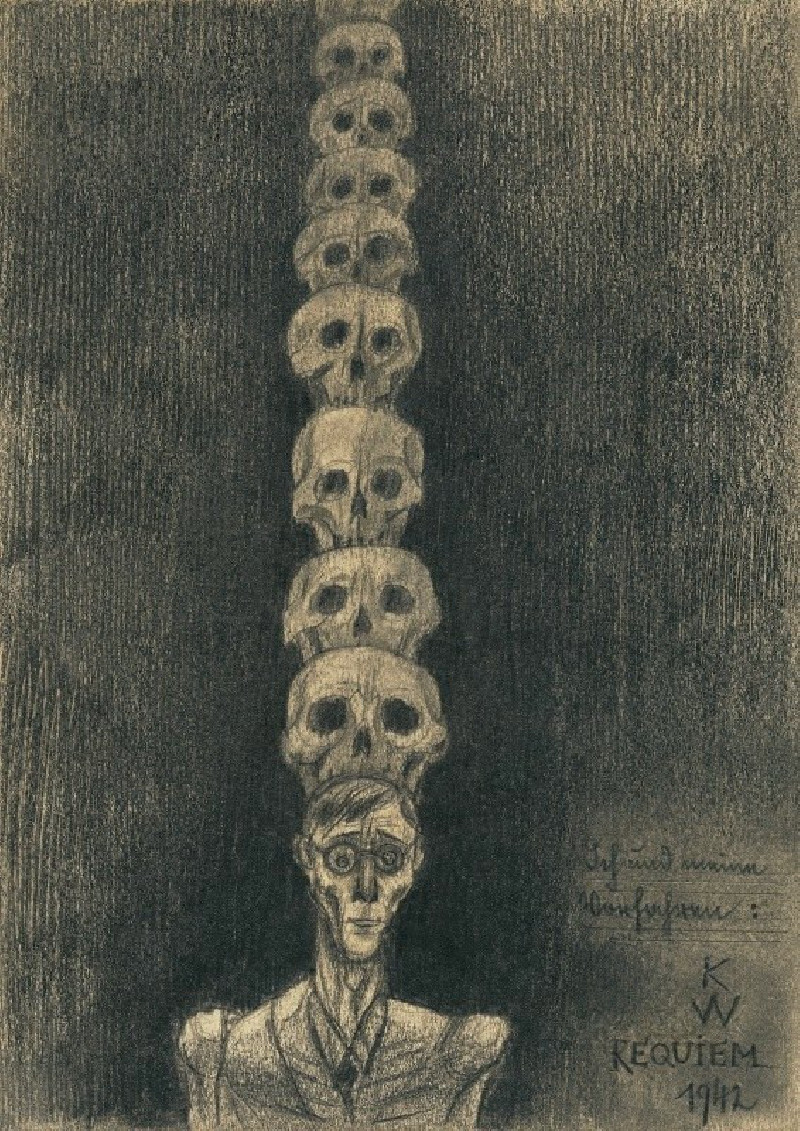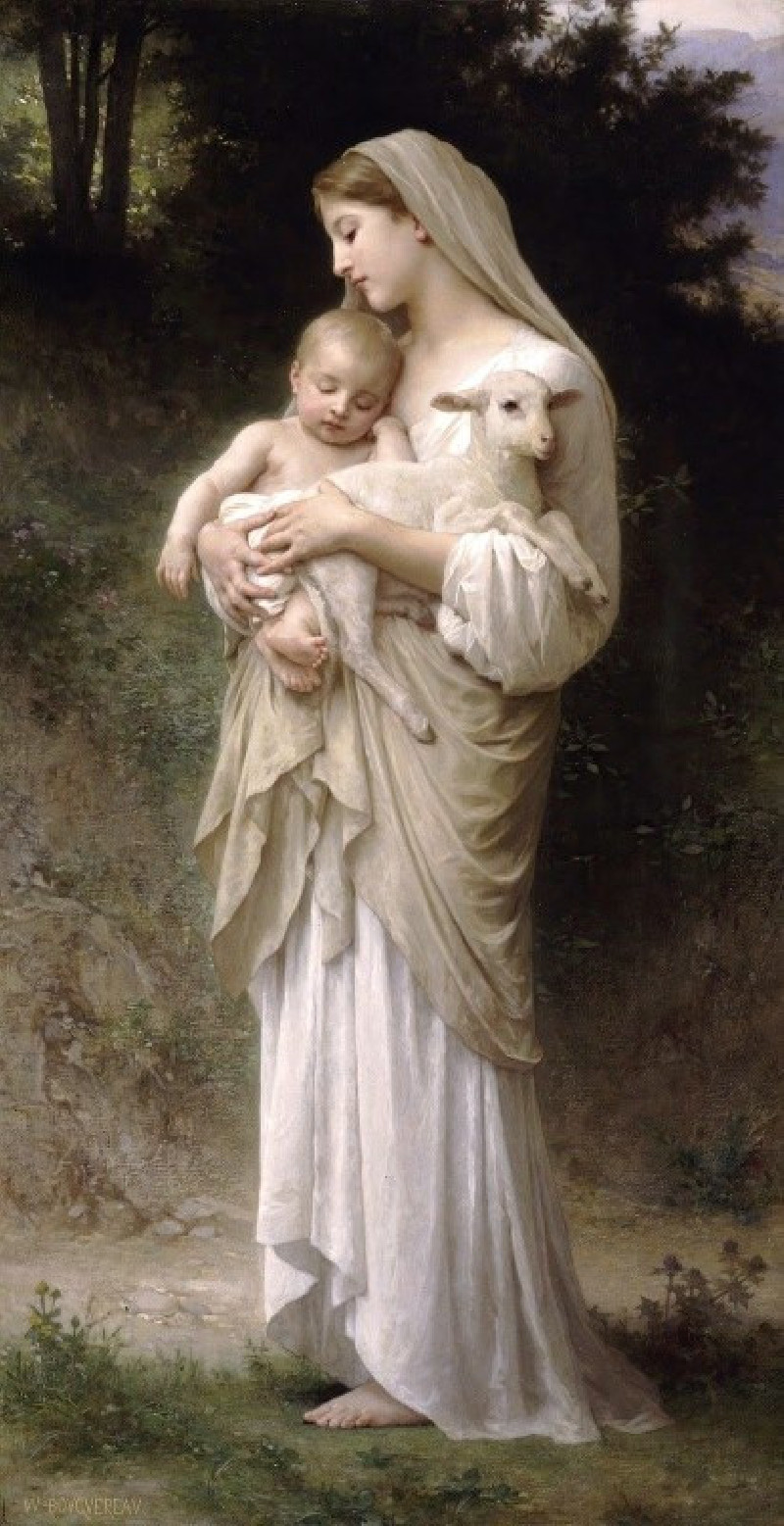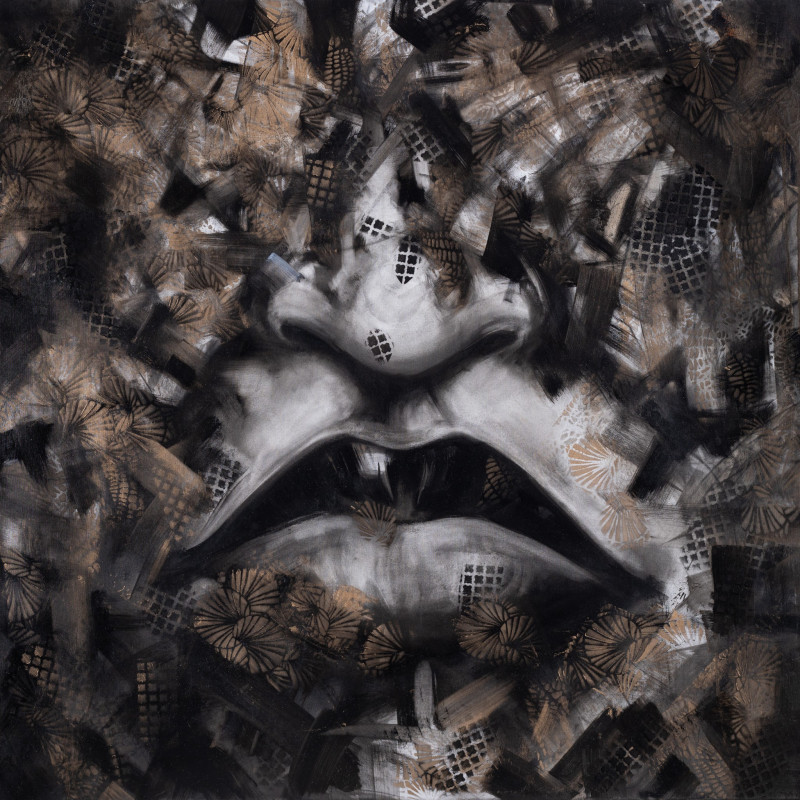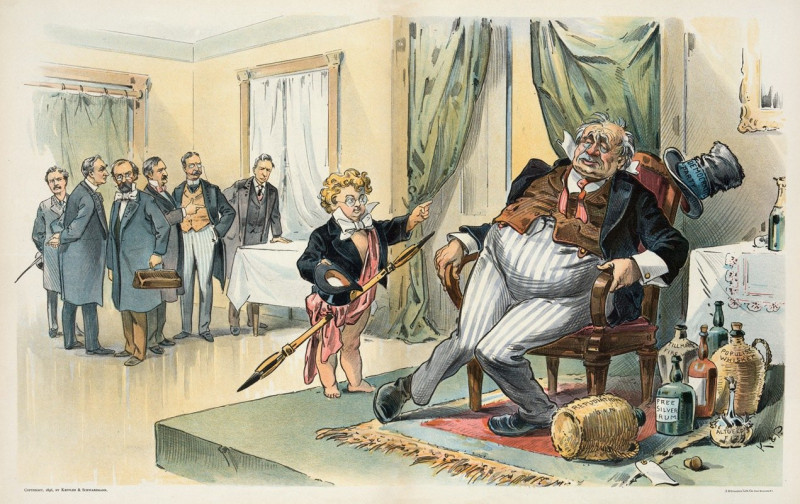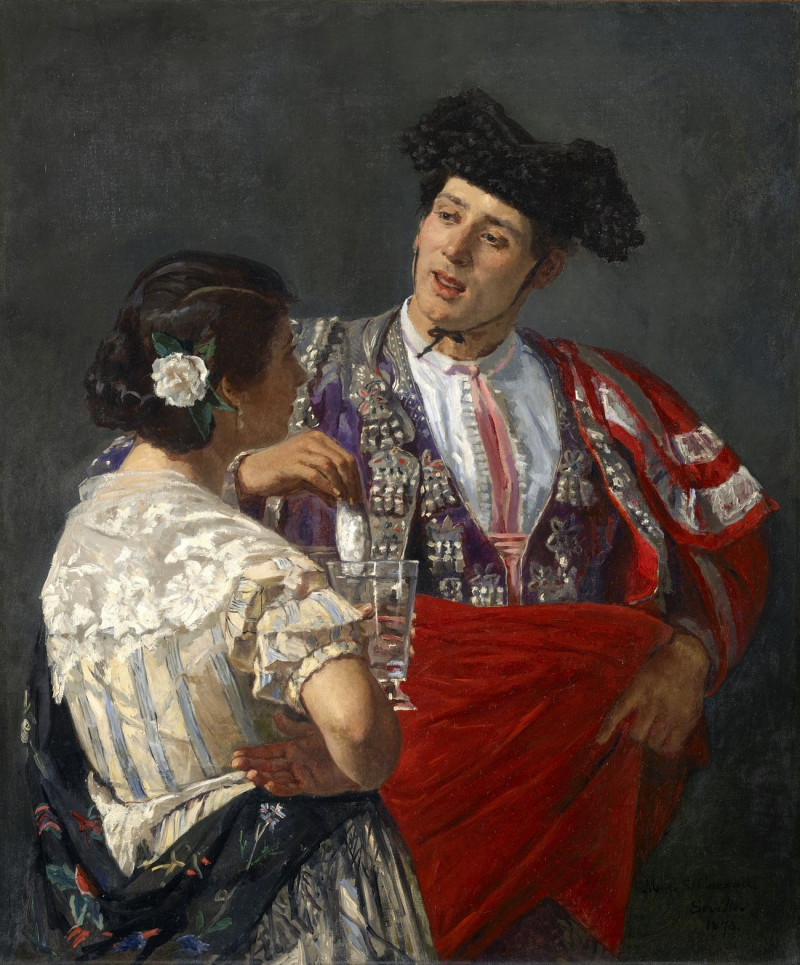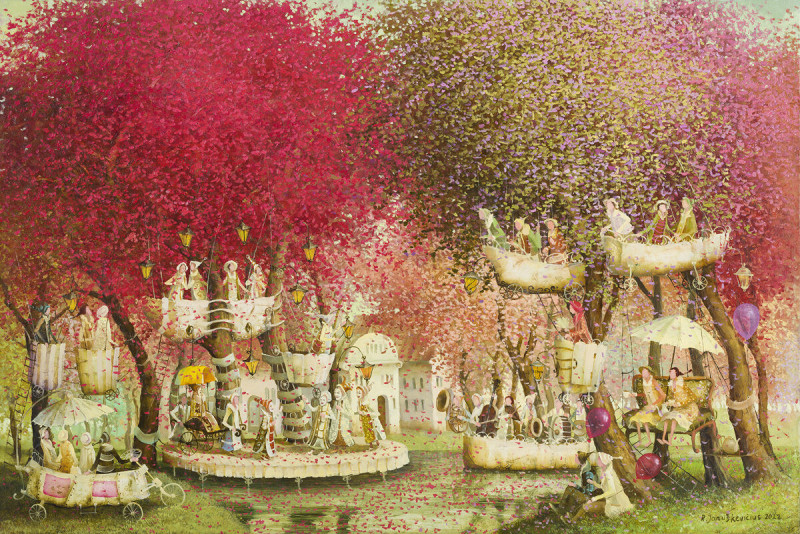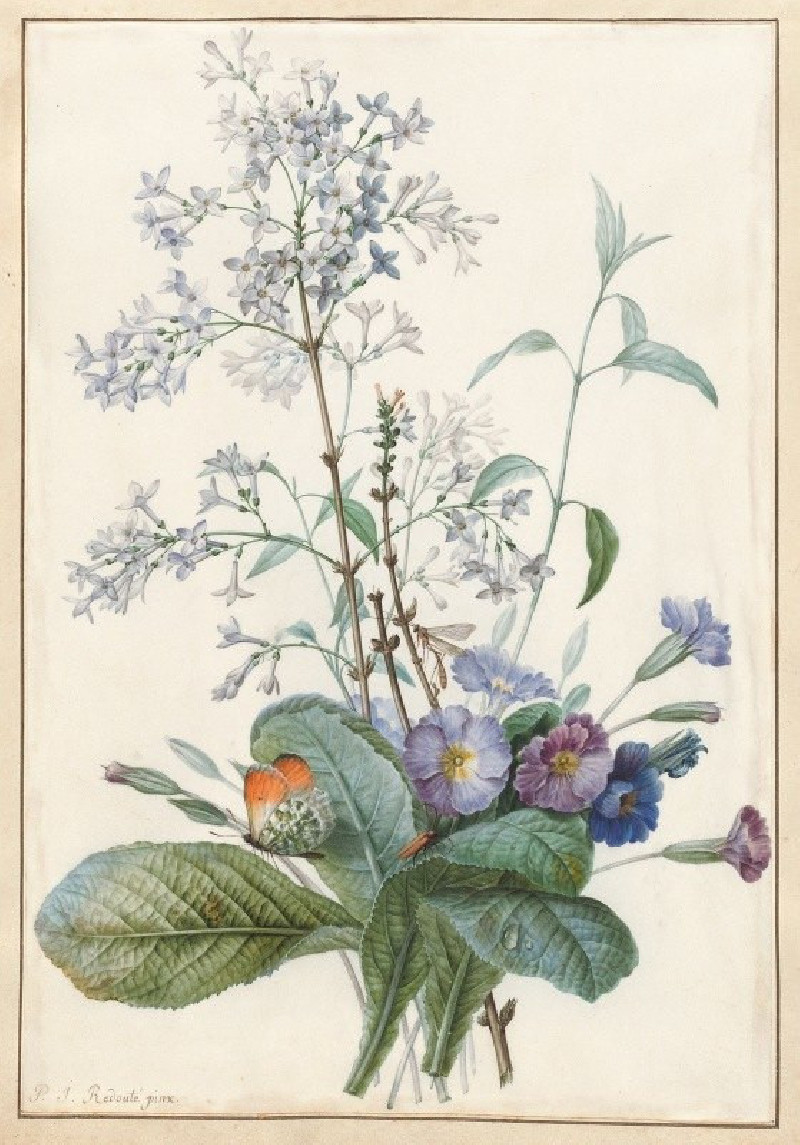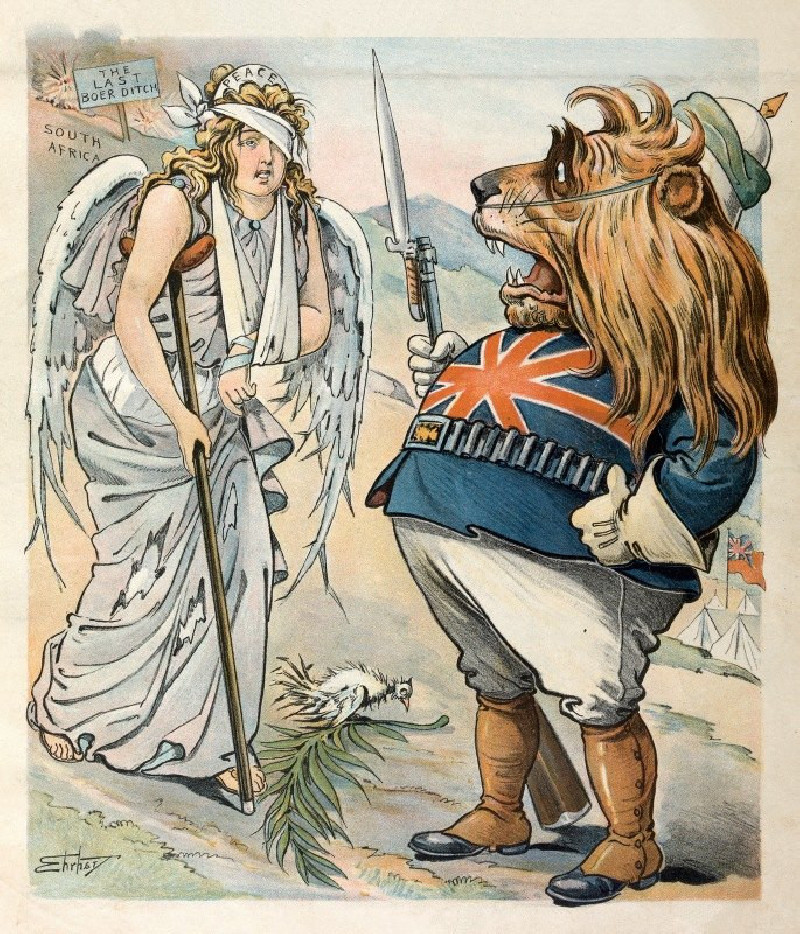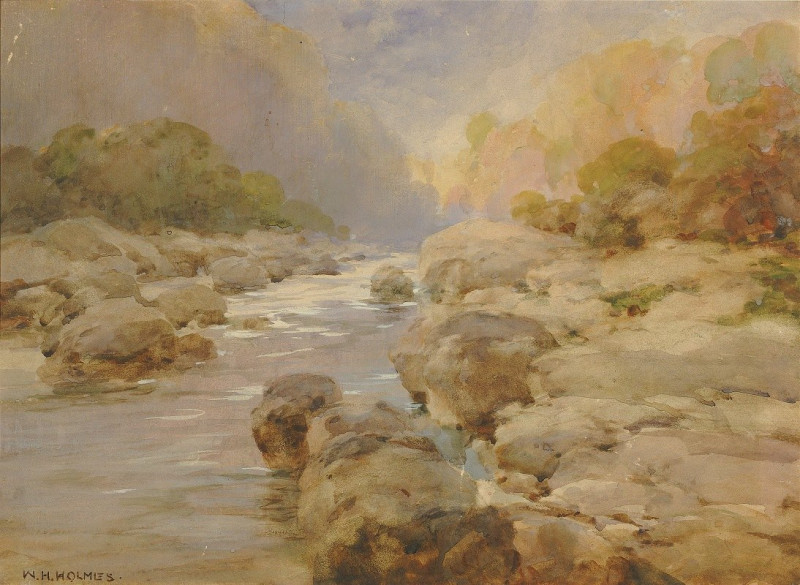Spielende Kinder (1914)
Technique: Giclée quality print
Recommended by our customers
More about this artwork
Ernst Ludwig Kirchner's 1914 etching *Spielende Kinder*, or "Playing Children," captures the essence of childhood joy and exuberance through the dynamic movements and expressions of its subjects. The artwork presents three children deeply engrossed in their game, characterized by the fluid, almost erratic lines that betray a sense of movement and spontaneity.In the foreground, one of the children with flowing hair dashes forward, her strides and fluttering dress suggesting rapid movement. To her right, another child donning a sun hat is drawing a circle in the air with what appears to be a wand or stick, her face marked by a playful, engaging expression. A third child, depicted in a more subdued pose, completes the trio, watching the others with a calm, observative demeanour.Set against a sketchily indicated background that implies an ordinary, perhaps urban setting, the scene’s simplicity focuses attention on the figures’ playful interaction. Kirchner's mastery in the German Expressionist style is evident in his ability to convey emotional depth and movement using minimal detail and brisk, abstract lines.
Delivery
Returns
Ernst Ludwig Kirchner (1880–1938) was one of the most important German Expressionist painters. He was a co-founder of Die Brücke, a group of German expressionist artists formed in Dresden in 1905. Die Brücke and Kirchner took inspiration from Vincent Van Gogh and Edvard Munch, as well as African and Oceanic art. They used woodblock printing as a medium to showcase their signature style: flat, unrealistic images with vivid colors. The recurring themes in Kirchner's artworks included exotic cultures, faraway landscapes, self-portraits, dancers and Berlin street life. His paintings and prints effectively portrayed non-European cultures despite the fact that he never traveled outside of Europe.

